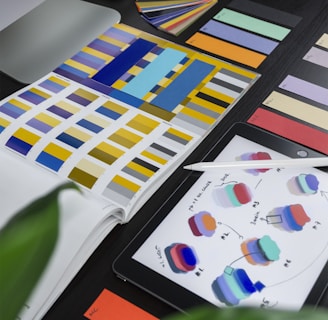What is "Good" Design?
Jon White
10/6/20233 min read


What is “Good” Design?
For some, the word “Design” is confused with the word “Decorating” as they think of Design as being only what something “Looks” like.
In an interview with Pepsi’s Chief Design Officer Mauro Porcini, Air BNB cofounder Joe Gebbia makes the profound statement that Design isn’t what a thing looks like, but rather how that thing “works”.
Therefore, “Good Design” is that elusive ephemeral quality of beauty, utility, and functionality that we often can’t describe with words but know it when we experience it.
That feeling that you get when you use your favorite toothbrush, eat at your favorite restaurant, or put on your favorite outfit.
That is “Good Design”.
Some say that there is no such thing as “Good Design” because design is, by its very nature, subjective. More art than science.
In reality, Design, and Art for that matter, is just as much a science as chemistry and biology. And as a science it has rules and measures.
The Oxford English Dictionary defines a science as “the intellectual and practical activity encompassing the systematic study of the structure and behavior of the physical and natural world through observation and experiment”.
For anyone who has ever practiced art, even as a hobbyist, you know that art is mostly about observation and experiment. Through experimentation Di Vinci perfected the Sfumato technique that he used to paint the Mona Lisa, a painting that was a portrait of a real woman whose features he documented through observation.
Regardless of a person’s opinion of the painting, there is no denying that the technique used to produce it is exceptional.
In the same way, Design relies on experimentation of various techniques and observation of the behavior of the physical and natural world to create solutions to everyday problems.
When most people think of Design, their mind immediately jumps to the world of “Interior Design” that has been popularized by networks such as HGTV. However most of what people consider “Interior Design” (such as choosing furniture and paint colors) is actually “Interior Decorating“, which is just a very small part of what Interior Designers do. True Interior Designers are concerned with every aspect of the interior space of a building including how safe the space is and how it affects the health and well-being of the occupant.
This gets to the heart of the bigger misconception. The thought that design is simply “how a thing looks”. Look is only one small dimension of design. Everything that exists that is not natural is a product of human design. This is reflected in the variety of design disciplines that exist. There is sustainable design, graphic design, industrial design, product design, business design, conversation design, experience design, fashion design, interior design, and architecture to name a few.
When it comes to that question, “What is Good Design”, I like Robert Wong’s definition of “Good Design”. Wong, the head of Google’s Creative Labs, said in an interview for Debbie Millman’s Design Matters Podcast “Whoever can design the stuff that makes people feel better will win”.
Simply put, Good Design is design that makes people feel better.
But what does this mean?
Our feelings can be described as our body’s interpretation of what we take in via our senses combined with the surrounding context. Our senses being Touch, Taste, Sight, Hearing, Smell and (I’m adding two extra senses here for those of you who are only used to five senses) Emotion, and Intuition. Feelings are our brain’s interpretation of the data that we absorb via these senses.
Therefore, Good Design is design that appeals to our senses and design that creates positive context for these sensory inputs.
A perfect example of this is the feeling that you get when you go to your favorite restaurant. Renown hotel, restaurant, and theatre architect David Rockwell (also a guest on Millman’s Podcast) points out that the restaurant experience is just as much about the design of the restaurant as it is the food. But he expands on this statement by clarifying that the design is everything from how the food gets to the table hot, to the chair that you sit in and what you look at while you eat. He then makes a profound statement that speaks to the heart of “Good Design” when he says that the difference between a Dump and a Dive is that a Dive is a Dive on purpose.
Yes, the subtle combination of how all of your 7 senses perceive the world combined with the atmosphere that is the background for that perception creates that unique phenomenon that we call “Good Design”.
When you look at “Design” through this lens it becomes a little clearer what “Good” Design looks like.
Borrowing from Mauro Porcini’s 10 principles of “Meaningful” Design, “Good Design” is Aesthetic, Shareable, Expressive, Relative, Financially Sustainable, Environmentally Sustainable, Socially Sustainable, Intellectually Sustainable, Emotionally Sustainable, and Functional.
“Good” Designers, therefore, put thought and intent into every aspect of the designs that they deliver and aim to create meaningful, sustainable, human centered experiences through the art and science that is “Good Design”.


